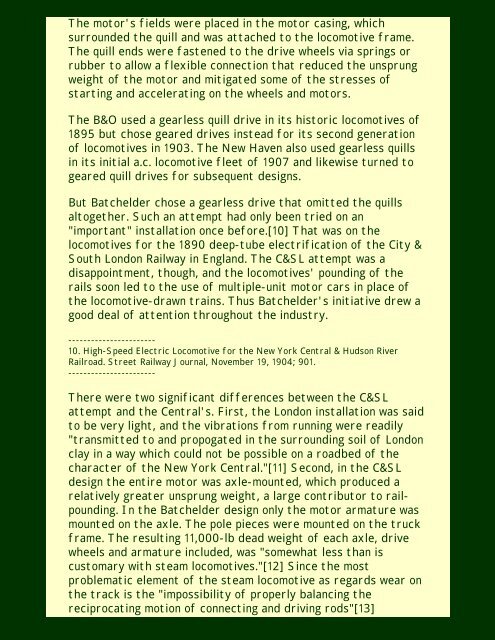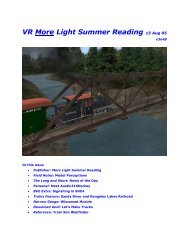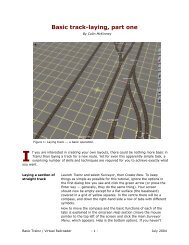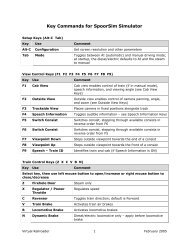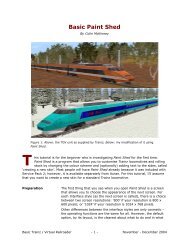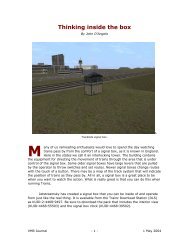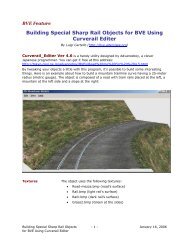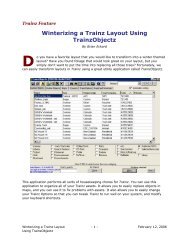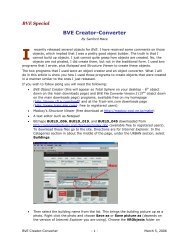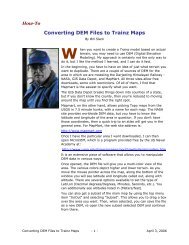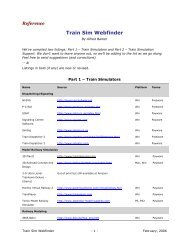Old Maude, Preface - Virtual Railroader
Old Maude, Preface - Virtual Railroader
Old Maude, Preface - Virtual Railroader
You also want an ePaper? Increase the reach of your titles
YUMPU automatically turns print PDFs into web optimized ePapers that Google loves.
The motor's fields were placed in the motor casing, which<br />
surrounded the quill and was attached to the locomotive frame.<br />
The quill ends were fastened to the drive wheels via springs or<br />
rubber to allow a flexible connection that reduced the unsprung<br />
weight of the motor and mitigated some of the stresses of<br />
starting and accelerating on the wheels and motors.<br />
The B&O used a gearless quill drive in its historic locomotives of<br />
1895 but chose geared drives instead for its second generation<br />
of locomotives in 1903. The New Haven also used gearless quills<br />
in its initial a.c. locomotive fleet of 1907 and likewise turned to<br />
geared quill drives for subsequent designs.<br />
But Batchelder chose a gearless drive that omitted the quills<br />
altogether. Such an attempt had only been tried on an<br />
"important" installation once before.[10] That was on the<br />
locomotives for the 1890 deep-tube electrification of the City &<br />
South London Railway in England. The C&SL attempt was a<br />
disappointment, though, and the locomotives' pounding of the<br />
rails soon led to the use of multiple-unit motor cars in place of<br />
the locomotive-drawn trains. Thus Batchelder's initiative drew a<br />
good deal of attention throughout the industry.<br />
-----------------------<br />
10. High-Speed Electric Locomotive for the New York Central & Hudson River<br />
Railroad. Street Railway Journal, November 19, 1904; 901.<br />
-----------------------<br />
There were two significant differences between the C&SL<br />
attempt and the Central's. First, the London installation was said<br />
to be very light, and the vibrations from running were readily<br />
"transmitted to and propogated in the surrounding soil of London<br />
clay in a way which could not be possible on a roadbed of the<br />
character of the New York Central."[11] Second, in the C&SL<br />
design the entire motor was axle-mounted, which produced a<br />
relatively greater unsprung weight, a large contributor to railpounding.<br />
In the Batchelder design only the motor armature was<br />
mounted on the axle. The pole pieces were mounted on the truck<br />
frame. The resulting 11,000-lb dead weight of each axle, drive<br />
wheels and armature included, was "somewhat less than is<br />
customary with steam locomotives."[12] Since the most<br />
problematic element of the steam locomotive as regards wear on<br />
the track is the "impossibility of properly balancing the<br />
reciprocating motion of connecting and driving rods"[13]


